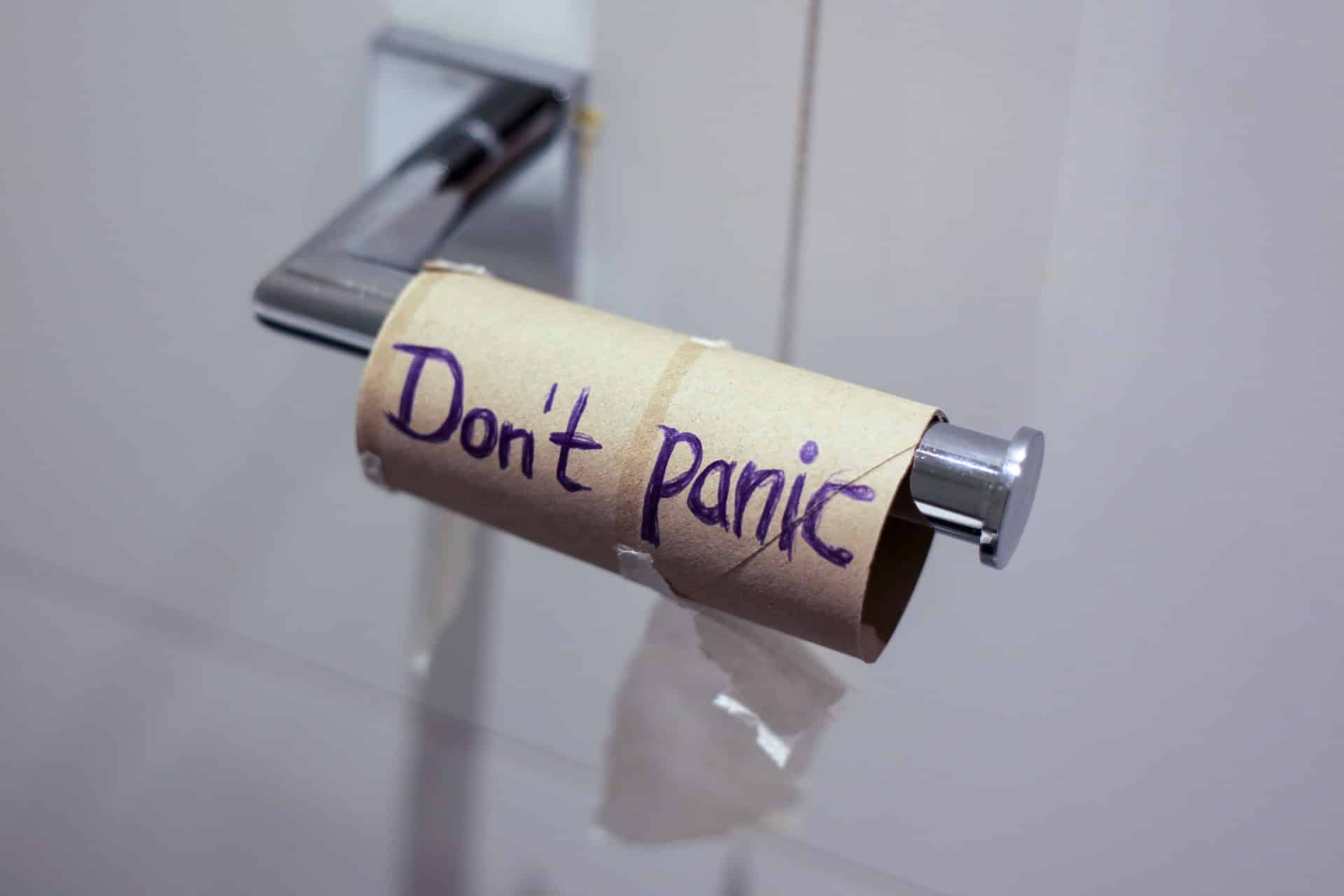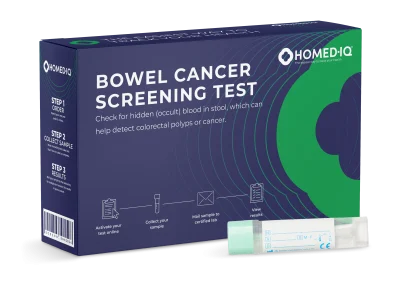Everybody has them, yet we don’t like talking about it – bowel movements. But did you know that a stool sample can tell you a lot about your health? It is important to check your stool regularly because its texture, shape, colour, and even smell can give you an indication of your health. But this is not where the insight ends. Sending a stool sample into the lab can give you much more information than you might expect. Stool samples are for example used for bowel cancer screening and can thus provide important information as to whether further medical examinations are necessary. In this article, we would like to inform you about the conditions a stool sample can diagnose.
Is my stool healthy?
First, it is important to define what healthy stool actually looks like. Generally, stool has a rather soft texture and a brownish colour. Stool consists of around 75% water and around 25% solid matter and consists of indigestible food, dead bacteria, and inorganic substances. On average, it takes food three days to pass through your digestive system, resulting in a bowel movement. In case your stool has a black or even red colour, you should visit a doctor as this indicates gastrointestinal bleeding. Grey stool can be an indicator of liver problems, while yellow, sour-smelling stool can indicate that your intestines do not absorb and digest fat properly.
Which diseases can be detected in a stool sample?
As mentioned earlier, stool can not only be visually expected- it is also possible to take stool samples and send them to a lab. Stool samples can help diagnose a wide variety of diseases, such as:
- Inflammatory bowel disease
- Fat malabsorption
- Pancreatic insufficiency
- Bleeding in the digestive system
Inflammatory bowel disease
With a stool sample, it is possible to measure the calprotectin levels in the stool. Calprotectin is a protein that can be found in your white blood cells. It is known for having strong antifungal and antibacterial properties. When inflammation occurs, calprotectin rises. Its concentration relates directly to the intensity of the inflammation. The more intense the IBD is, the higher the calprotectin levels will be.
Fat malabsorption
In case your digestive system cannot absorb or digest fat in your food properly, you can detect this with a stool sample. However, keep in mind that a stool sample only detects if you have abnormally high amounts of fat in your stool, not why. Therefore, if this diagnosis occurs, further testing is required.
Pancreatic insufficiency
When sending a stool sample to the laboratory, it is also possible to check for pancreatic insufficiency. With this test, elastase in the stool will be measured. Elastase is an enzyme that is made in an organ in your upper abdomen, called your pancreas. When your pancreas is healthy, a sufficient level of elastase will be found in your stool sample. If the level is too low, it can be an indicator for pancreatic insufficiency.
Bleeding in the digestive system
There are two types of stool tests that are used to test for colorectal cancer; the fecal occult blood test (FOBT) test that focuses on finding hidden (occult) blood in the stool sample, and the stool DNA test that detects abnormal DNA associated with bowel polyps or cancer. Interested? Homed-IQ now offers a Bowel Cancer Screening Test that can be easily taken from home before being sent to a laboratory for analysis.
-

Bowel Cancer Screening Test
€49,00
Which infections can be detected in a stool sample?
Generally speaking, a stool sample can help diagnose three types of infections:
- Worms
- Parasites
- Bacteria
Worms in stool sample
Believe it or not, but worms are an infection that not only animals can pick up. It is possible to pick up worms in various ways, such as while travelling through a tropical country, or when working with children in a daycare centre. Symptoms of a worm infection may include:
- Diarrhoea
- Nausea or vomiting
- Abdominal pain
- Unexplained weight loss
- Fatigue
Pathogenic bacteria in stool sample
Sending a stool sample to the laboratory can reveal a variety of bacteria, such as:
- Escherichia coli 0157:H7 (can be found in raw and undercooked beef)
- Shigella (can be found in contaminated water or contaminated food)
- Campylobacter (can be found in raw and undercooked poultry)
- Salmonella (can be found in raw poultry or raw eggs)
Parasites in stool sample
It is also possible to detect parasites and/or their eggs in stool samples. Common organisms found in a stool sample are Blastocystis or Giardia. There is no direct link between Blastocystis and any diseases, but it is noticeable that patients with Blastocystis often suffer from diarrhoea. Giardia also has no direct link to diseases, and most people also do not experience any symptoms. However, if patients do experience symptoms, they experience a wider variety of symptoms compared to Blastocystis. Symptoms of Giardia are, among others:
- Stomach pain
- Fatty stool
- Gas/flatulence
- Fatigue
What can stool tests not diagnose?
So far, we have highlighted all the diseases and infections that an examination of a stool sample can detect, but this examination also has its limits. Stool samples do not offer a complete picture of your overall health. A stool sample cannot detect the following:
- Gluten intolerance
- Other food sensitivities
- SIBO
- Food allergies
- Candida overgrowth
- Dysbiosis
- Leaky gut
The examination of a stool sample is not considered a scientifically valid way to diagnose gluten sensitivity, lactose intolerance, or any other sort of food intolerance/sensitivity. Therefore, it is important to point out that examined stool samples cannot provide any kind of evidence-based recommendations about which kind of diet you should follow.
References
Duker, T. (2019, April 5). What Can a Stool Test Diagnose? US Health News. Retrieved April 1, 2022, from https://health.usnews.com/health-news/blogs/eat-run/articles/what-can-a-stool-test-diagnose
Falconer, A. (2021, July 20). What can be detected in a stool sample? (UK). Healthpath. Retrieved April 1, 2022, from https://healthpath.com/gut-health/what-can-be-detected-stool-sample-uk/
Piedmont. (n.d.). What Your Stool Says About Your Health | Piedmont Healthcare. Retrieved April 1, 2022, from https://www.piedmont.org/living-better/what-your-stool-says-about-your-health#:%7E:text=It%20may%20sound%20gross%2C%20but,health%20problems%2C%20such%20as%20cancer.





